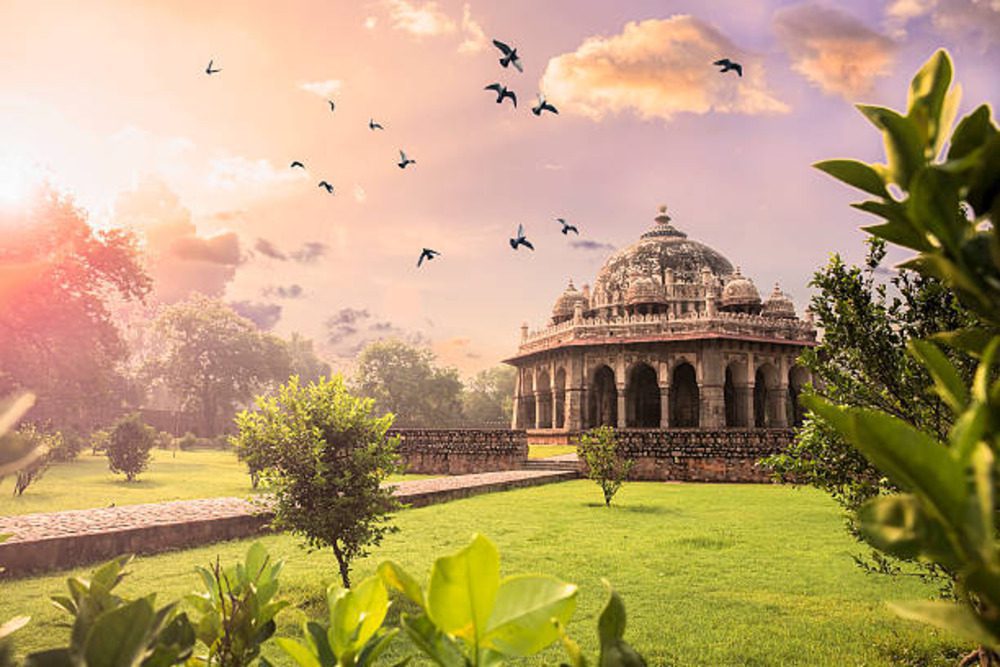India is a land of diverse cultures and rich history, home to some of the most spectacular best heritage sites in India. From ancient temples to majestic forts, each site tells a captivating story of the country’s glorious past. In this comprehensive guide, we will take you through the best heritage sites in India, offering an unforgettable journey through time. Explore the architectural wonders and historical marvels that have shaped India’s cultural and historical landscape, and immerse yourself in the narratives that define this vibrant and storied land. In this comprehensive guide, we will take you through the best heritage sites in India, each offering a unique narrative and an immersive experience into the country’s illustrious past.
- Explore India’s Rich History and Architectural Marvels with Our Comprehensive Guide
- Conclusion
- FAQs about the Best Heritage Sites in India
Explore India’s Rich History and Architectural Marvels with Our Comprehensive Guide
India’s heritage is a tapestry of historical marvels that span centuries and civilizations. The best heritage sites in India not only showcase architectural brilliance but also offer insights into the cultural and social fabric of their times. Whether you’re a history buff, an architecture enthusiast, or simply someone looking to explore the depths of India’s past, these sites are a must-visit.
Whether you’re a history enthusiast captivated by ancient narratives, an architecture aficionado fascinated by intricate designs and engineering feats, or a curious traveler seeking to delve into the depths of India’s past, exploring the best heritage sites in India is an essential journey. These sites not only captivate with their grandeur but also enrich your understanding of India’s diverse cultural heritage.
Taj Mahal, Agra
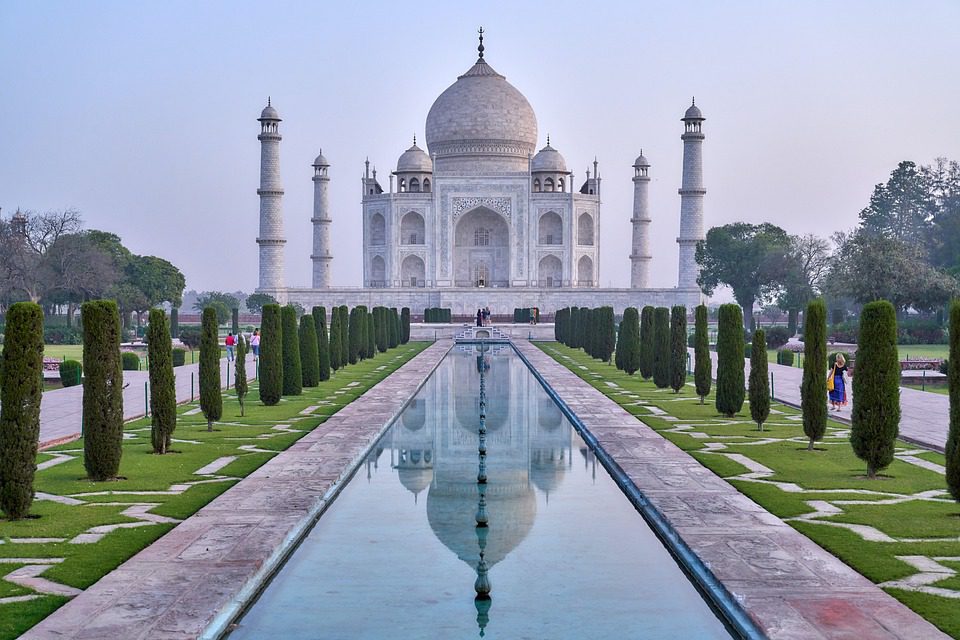
Taj Mahal – the epitome of love, is undoubtedly one of the best heritage sites in India. This white marble mausoleum was built by Emperor Shah Jahan in memory of his beloved wife Mumtaz Mahal. Recognized as a UNESCO World Heritage Site, the Taj Mahal is an architectural masterpiece with intricate carvings and beautiful gardens. Visiting the Taj Mahal at sunrise or sunset offers a magical experience as the marble changes color with the light. The Taj Mahal remains a symbol of eternal love and a highlight among the best heritage sites in India.
Travel Costs:
- By Air: Flight to Delhi + Train to Agra
- Approx. ₹3,000-₹10,000 ($36-$120) for a one-way flight to Delhi from major Indian cities.
- Train from Delhi to Agra: ₹300-₹1,000 ($4-$12)
- By Train: Direct trains to Agra from major cities
- ₹500-₹2,000 ($6-$24)
- By Road: Bus or car
- ₹1,000-₹4,000 ($12-$48) depending on the distance
Qutub Minar, Delhi
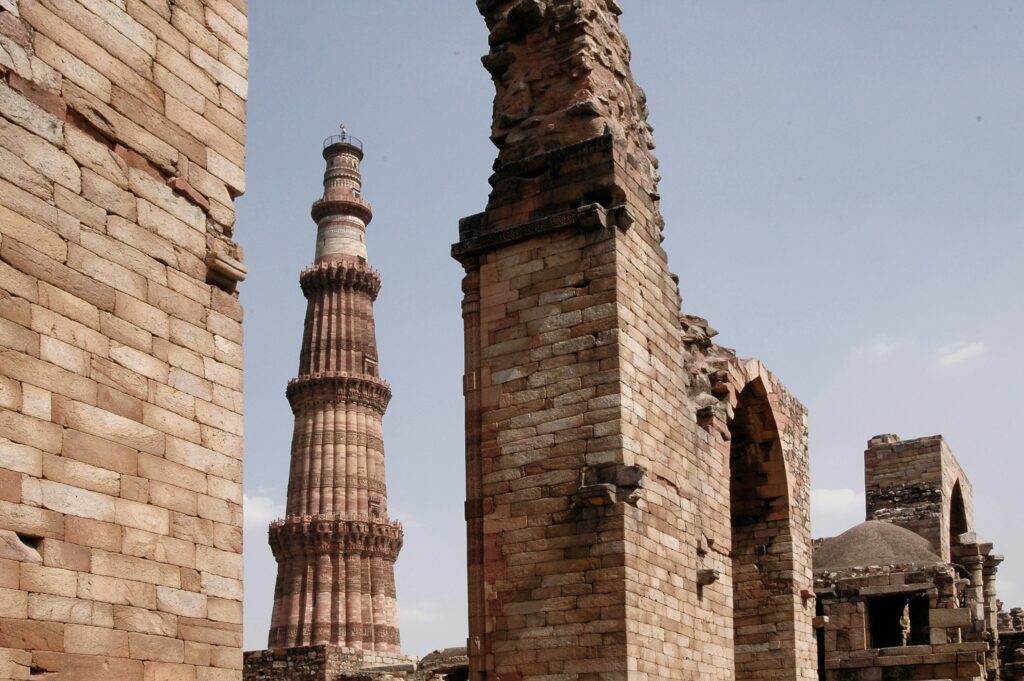
Qutub Minar in Delhi is a stunning example of Indo-Islamic architecture and one of the best heritage sites in India. This 73-meter tall minaret was constructed by Qutub-ud-din Aibak in 1193. The complex also includes other historical monuments like the Quwwat-ul-Islam Mosque and the Iron Pillar, which dates back to the 4th century and is known for its rust-resistant composition. As one of the best heritage sites in India, it not only captivates with its grandeur but also provides valuable insights into the cultural and historical transitions that shaped the region.
Travel Costs:
- By Air: Flight to Delhi
- Approx. ₹3,000-₹10,000 ($36-$120) for a one-way flight from major Indian cities
- By Train: Direct trains to Delhi from major cities
- ₹500-₹3,000 ($6-$36)
- By Road: Bus or car
- ₹1,000-₹5,000 ($12-$60) depending on the distance
Hampi, Karnataka
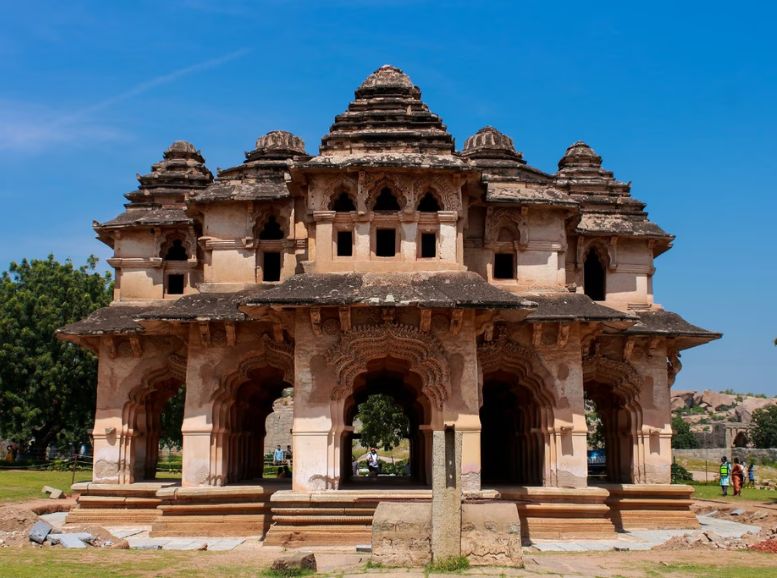
Hampi, located in Karnataka, is a UNESCO World Heritage Site known for its ruins that date back to the Vijayanagara Empire. The site features numerous temples, palaces, and market streets, offering a glimpse into the grandeur of the past. The Virupaksha Temple, Vittala Temple with its musical pillars, and the Stone Chariot are some of the highlights of this best heritage sites in India.
Travel Costs:
- By Air: Flight to Hubli + Train/Bus to Hampi
- Approx. ₹3,000-₹12,000 ($36-$144) for a one-way flight to Hubli
- Train/Bus to Hampi: ₹300-₹1,000 ($4-$12)
- By Train: Direct trains to Hospet (nearest station) from major cities
- ₹500-₹2,500 ($6-$30)
- By Road: Bus or car
- ₹1,000-₹6,000 ($12-$72) depending on the distance
Khajuraho Temples, Madhya Pradesh
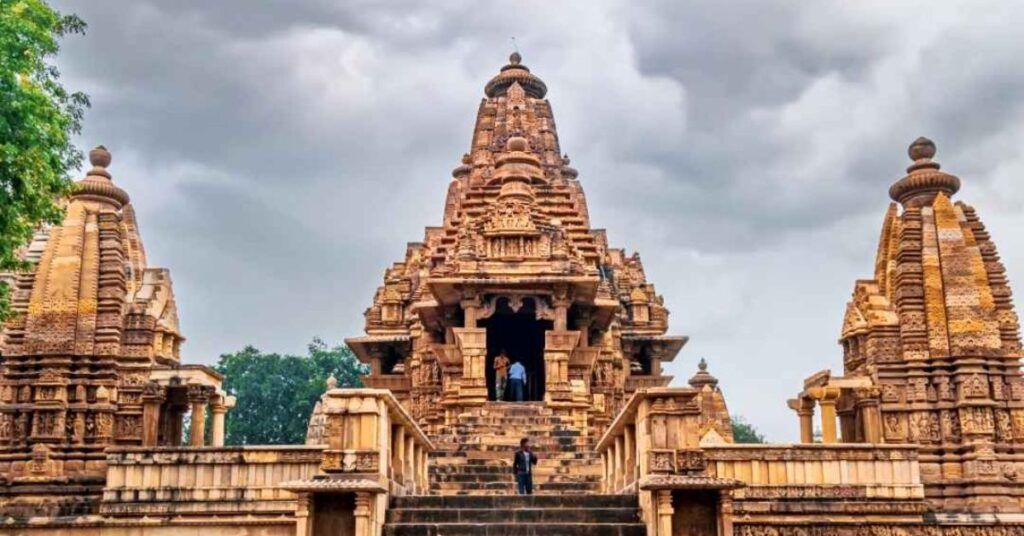
The Khajuraho Temples are renowned for their stunning architecture and erotic sculptures. Built between 950 and 1050 AD by the Chandela dynasty, these temples are divided into three groups – Western, Eastern, and Southern. The intricate carvings depict various aspects of life and spirituality, making Khajuraho one of the best heritage sites in India. The Khajuraho Temples continue to captivate visitors with their architectural brilliance and artistic richness, making them an indispensable part of India’s heritage and a must-visit among the best heritage sites in India.
Travel Costs:
- By Air: Flight to Khajuraho
- Approx. ₹4,000-₹15,000 ($48-$180) for a one-way flight from major Indian cities
- By Train: Direct trains to Khajuraho or nearby stations
- ₹600-₹3,000 ($7-$36)
- By Road: Bus or car
- ₹1,000-₹8,000 ($12-$96) depending on the distance
Ajanta and Ellora Caves, Maharashtra
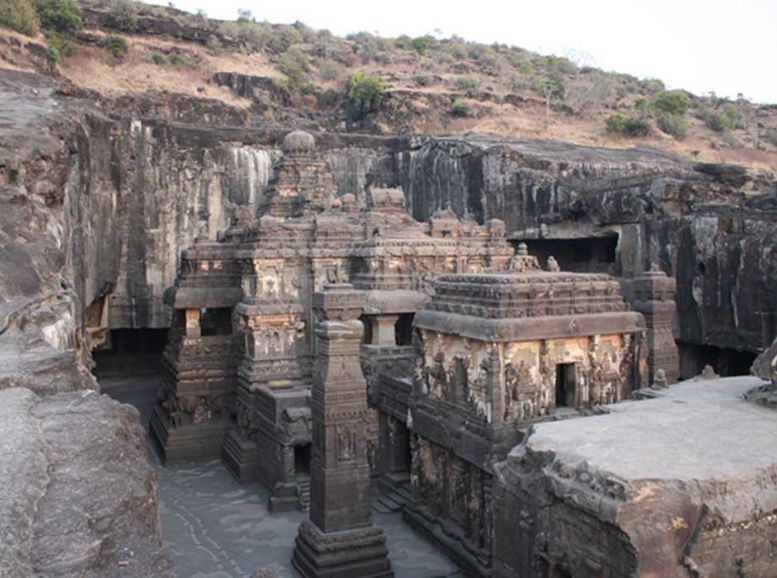
The Ajanta and Ellora Caves in Maharashtra are rock-cut cave complexes that are UNESCO World Heritage Sites. The Ajanta Caves are known for their Buddhist paintings and sculptures, dating back to the 2nd century BCE to 480 CE. The Ellora Caves, on the other hand, feature Hindu, Buddhist, and Jain temples, with the Kailasa temple being the most notable for its monolithic structure. As two of the best heritage sites in India, they provide an immersive experience into artistic and best heritage sites in India.
Travel Costs:
- By Air: Flight to Aurangabad
- Approx. ₹3,000-₹12,000 ($36-$144) for a one-way flight from major Indian cities
- By Train: Direct trains to Aurangabad from major cities
- ₹500-₹3,000 ($6-$36)
- By Road: Bus or car
- ₹1,000-₹6,000 ($12-$72) depending on the distance
Red Fort, Delhi
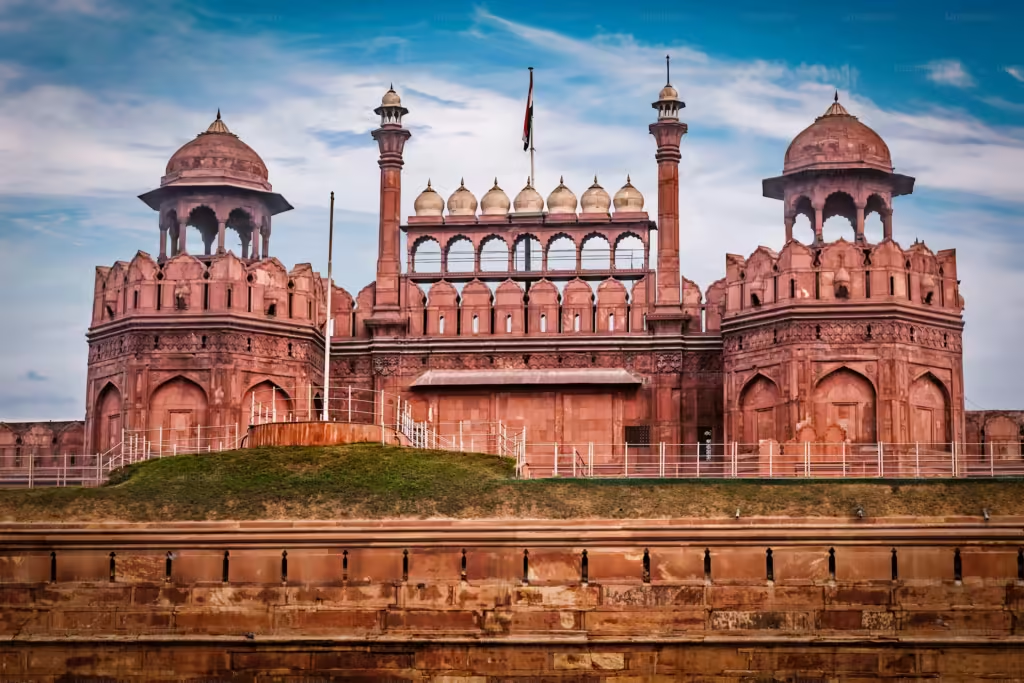
The Red Fort in Delhi is a symbol of India’s rich history and architectural prowess. Built by Mughal Emperor Shah Jahan in 1648, this red sandstone fort served as the main residence of the Mughal emperors for nearly 200 years. The fort complex includes beautiful gardens, palaces, and museums that reflect the Mughal era’s grandeur. The Red Fort’s architectural grandeur and historical significance make it one of the best heritage sites in India.
Travel Costs:
- By Air: Flight to Delhi
- Approx. ₹3,000-₹10,000 ($36-$120) for a one-way flight from major Indian cities
- By Train: Direct trains to Delhi from major cities
- ₹500-₹3,000 ($6-$36)
- By Road: Bus or car
- ₹1,000-₹5,000 ($12-$60) depending on the distance
Fatehpur Sikri, Uttar Pradesh
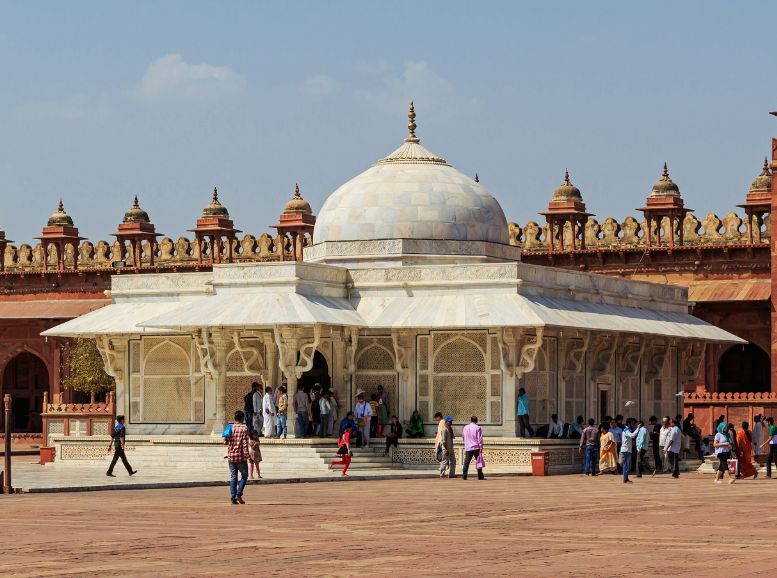
Fatehpur Sikri, located near Agra, was founded by Mughal Emperor Akbar in the late 16th century. This UNESCO World Heritage Site served as the capital of the Mughal Empire for a short period. The complex includes notable structures like the Buland Darwaza, Jama Masjid, and the Tomb of Salim Chishti, showcasing a blend of Indian, Persian, and Islamic architectural styles. As one of the best heritage sites in India, Fatehpur Sikri offers visitors an immersive journey into the grandeur of the Mughal Empire.
Travel Costs:
- By Air: Flight to Delhi + Train/Bus to Fatehpur Sikri
- Approx. ₹3,000-₹10,000 ($36-$120) for a one-way flight to Delhi from major Indian cities
- Train/Bus to Fatehpur Sikri: ₹300-₹1,000 ($4-$12)
- By Train: Direct trains to Agra + Local transport to Fatehpur Sikri
- ₹500-₹2,000 ($6-$24)
- By Road: Bus or car
- ₹1,000-₹4,000 ($12-$48) depending on the distance
Jaisalmer Fort, Rajasthan
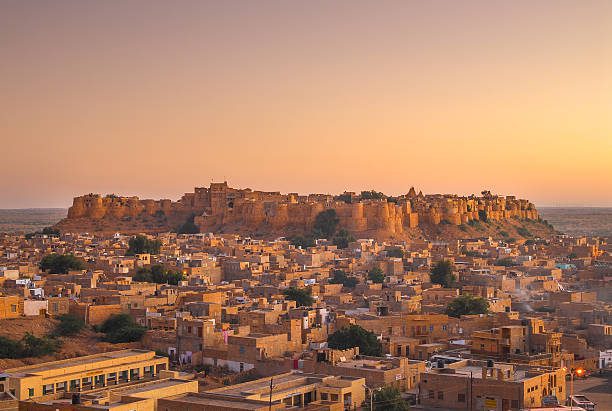
The Jaisalmer Fort, also known as Sonar Quila or the Golden Fort, is a living fort that rises majestically from the Thar Desert. Constructed in 1156 AD by Rawal Jaisal, it is one of the largest fully preserved fortified cities in the world. The fort’s yellow sandstone walls change color with the sun, giving it a magical aura. Inside, you will find palaces, Jain temples, and havelis that transport you back in time. As one of the best heritage sites in India, the Jaisalmer Fort offers a unique and immersive experience.
Travel Costs:
- By Air: Flight to Jodhpur + Train/Bus to Jaisalmer
- Approx. ₹4,000-₹15,000 ($48-$180) for a one-way flight to Jodhpur
- Train/Bus to Jaisalmer: ₹500-₹2,000 ($6-$24)
- By Train: Direct trains to Jaisalmer from major cities
- ₹600-₹3,500 ($7-$42)
- By Road: Bus or car
- ₹1,500-₹10,000 ($18-$120) depending on the distance
Mysore Palace, Karnataka
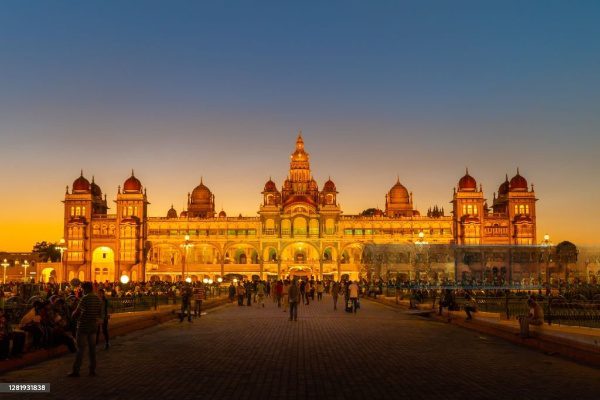
The Mysore Palace, also known as Amba Vilas Palace, is a stunning example of Indo-Saracenic architecture. This opulent palace, located in the heart of Mysore, was the residence of the Wodeyar dynasty. The palace is illuminated with nearly 100,000 light bulbs during the Dussehra festival, creating a breathtaking spectacle. As one of the best heritage sites in India, the Mysore Palace is a must-visit for those interested in experiencing India’s royal history and architectural splendor
Travel Costs:
- By Air: Flight to Bangalore + Train/Bus to Mysore
- Approx. ₹3,000-₹12,000 ($36-$144) for a one-way flight to Bangalore
- Train/Bus to Mysore: ₹300-₹1,000 ($4-$12)
- By Train: Direct trains to Mysore from major cities
- ₹500-₹2,500 ($6-$30)
- By Road: Bus or car
- ₹1,000-₹6,000 ($12-$72) depending on the distance
Konark Sun Temple, Odisha

The Konark Sun Temple is an architectural marvel dedicated to the Sun God. Built in the 13th century by King Narasimhadeva I, this UNESCO World Heritage Site is designed in the shape of a colossal chariot with intricately carved stone wheels, pillars, and walls. The temple’s intricate carvings and sculptures depict various aspects of life and mythology, making it a must-visit heritage site in India. As one of the best heritage sites in India, the Konark Sun Temple offers visitors a fascinating glimpse into the religious and artistic traditions of ancient India.
Travel Costs:
- By Air: Flight to Bhubaneswar + Train/Bus to Konark
- Approx. ₹3,000-₹10,000 ($36-$120) for a one-way flight to Bhubaneswar
- Train/Bus to Konark: ₹300-₹1,000 ($4-$12)
- By Train: Direct trains to Bhubaneswar + Local transport to Konark
- ₹500-₹3,000 ($6-$36)
- By Road: Bus or car
- ₹1,000-₹5,000 ($12-$60) depending on the distance
Conclusion
Exploring the best heritage sites in India is akin to stepping into a time machine that transports you through centuries of history, culture, and architectural splendor. Each of these sites stands as a testament to India’s rich and diverse past, offering a glimpse into the grandeur of bygone eras. From the majestic Taj Mahal, with its exquisite marble carvings, to the ancient rock-cut temples of Ajanta and Ellora, every heritage site narrates its own unique story.
The best heritage sites in India are not merely landmarks; they are living pieces of history. The Qutub Minar in Delhi showcases the intricate artistry of the 12th century, while Hampi’s ruins whisper tales of the Vijayanagara Empire’s former glory. The Khajuraho Temples, with their intricate sculptures, provide a glimpse into the artistic prowess of the Chandela dynasty. Each site invites you to delve deeper into the rich tapestry of India’s cultural and historical legacy.
Visiting these best heritage sites in India offers more than just sightseeing; it’s a journey through time. You’ll witness the architectural brilliance of the Red Fort, the serenity of the Konark Sun Temple, and the opulent Mysore Palace. Whether it’s the grandeur of Fatehpur Sikri or the majestic Jaisalmer Fort rising from the desert sands, each site promises an unforgettable experience.
So, pack your bags and prepare to embark on an extraordinary journey through India’s glorious past. The best heritage sites in India await you with their stories of ancient civilizations, artistic achievements, and architectural marvels, making your travel experience both enriching and memorable.
Explore More on Xplro.com
At Xplro.com, we are passionate about helping you discover the wonders of India. Our expertly curated travel guides and blogs offer comprehensive insights into the best heritage sites in India, along with valuable travel tips and detailed itineraries. Whether you’re planning a historical tour, a cultural trip, or an adventure, explore more on Xplro.com to make your journey unforgettable.
FAQs about the Best Heritage Sites in India
Q1: What are the must-visit heritage sites in India? A: The must-visit heritage sites in India include the Taj Mahal in Agra, Qutub Minar in Delhi, Hampi in Karnataka, Khajuraho Temples in Madhya Pradesh, Ajanta and Ellora Caves in Maharashtra, Red Fort in Delhi, Fatehpur Sikri in Uttar Pradesh, Jaisalmer Fort in Rajasthan, Mysore Palace in Karnataka, and the Konark Sun Temple in Odisha.
Q2: How can I reach these heritage sites efficiently? A: You can reach these heritage sites by air, train, or road. Each site has nearby airports and railway stations, and is accessible by road. The travel costs vary based on your location and mode of transport.
Q3: What is the best time of year to visit these heritage sites? A: The best time to visit these heritage sites is from October to March, when the weather is cooler and more comfortable for sightseeing and exploration.
Q4: Are guided tours available at these heritage sites? A: Yes, guided tours are available at most heritage sites. These tours provide detailed information about the history, architecture, and significance of each site, enriching your visit.
Q5: What should I wear when visiting these heritage sites? A: Wear comfortable clothing and footwear suitable for walking. For religious sites, it is respectful to dress modestly, covering your shoulders and knees. Carrying a shawl or scarf is advisable for such visits.
Q6: How much time should I allocate to visit each heritage site? A: The time required varies by site. For example, you might need a few hours to explore the Taj Mahal, while sites like Hampi and Ajanta & Ellora Caves might take a full day or more. Plan accordingly to fully experience each site.
Q7: Are there any entry fees for these heritage sites? A: Yes, most heritage sites have entry fees. The fees can vary for Indian and foreign tourists. It’s best to check the official websites or local tourist information for the latest fee structures.
Q8: Are these heritage sites accessible to people with disabilities? A: Accessibility varies by site. Some heritage sites have made efforts to accommodate visitors with disabilities, including ramps and wheelchair access. However, due to the historic nature of these sites, not all areas may be fully accessible.
Q9: Can I take photographs at these heritage sites? A: Yes, photography is usually allowed at these heritage sites, but some sites may have restrictions on flash photography or tripod use. Always check for specific rules and guidelines at each site.
Q10: What are the best ways to avoid crowds at these popular heritage sites? A: To avoid crowds, visit these sites early in the morning or late in the afternoon. Weekdays are generally less crowded than weekends. Booking tickets online in advance can also help you skip the lines.




